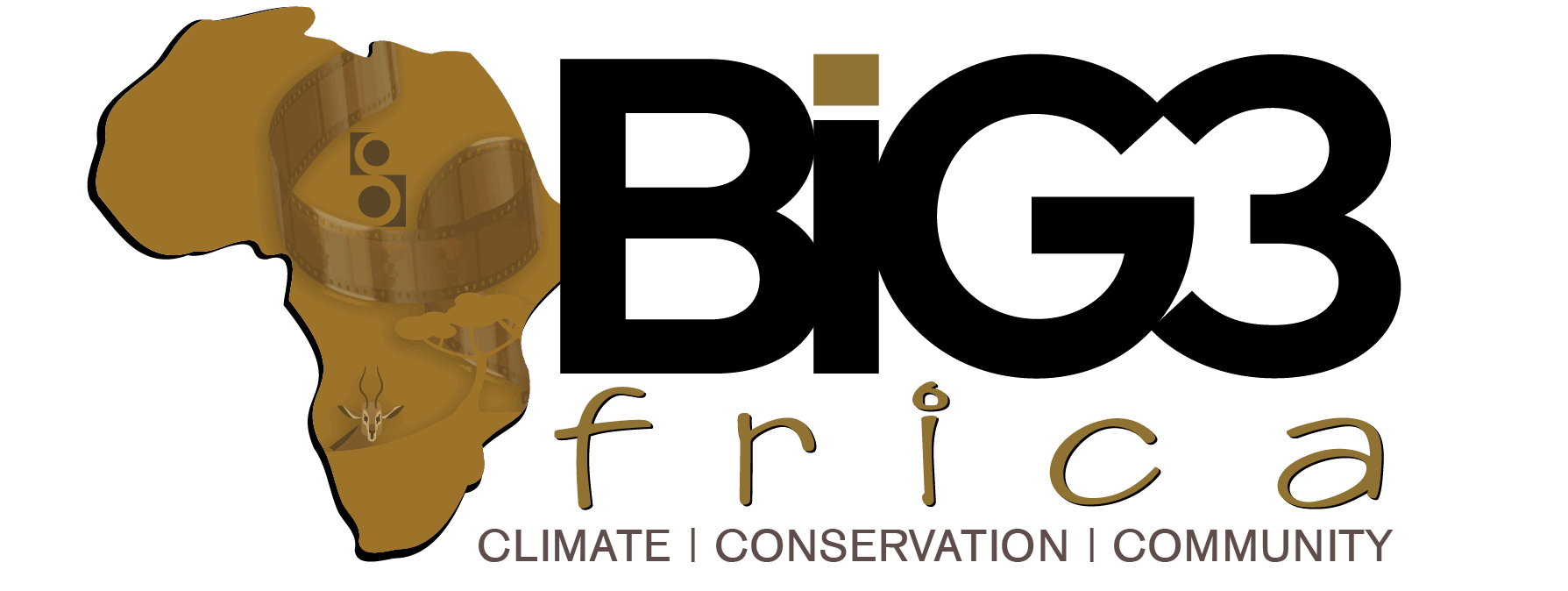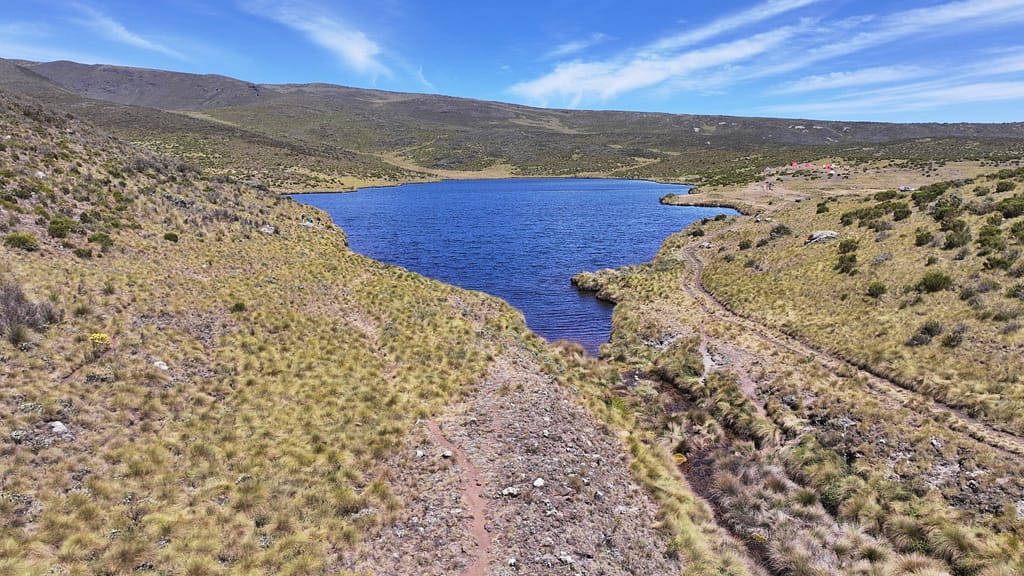Over 3,400 meters above sea level, atop Africa’s second-highest peak—Mt. Kenya—the once ice-covered rocks now lie bare. What remains of the glaciers that once blanketed the mountain’s summit now resembles a faint white stripe, slowly melting away.
Scientists have warned that Mt. Kenya’s remaining glaciers could vanish entirely by 2030, erasing a natural marvel that has stood tall for generations. Future generations may only know the mountain’s former glory through photographs and stories passed down by those who witnessed its splendor.
Miles away from the rocky summit lies Lake Ellis—a breathtaking alpine lake. Viewed from the southern angle, the lake remarkably resembles the map of Kenya. Its deep blue waters add to its striking beauty.

However, a closer look reveals a growing threat. At the lake’s outlet—where water exits and enters an underground tunnel believed to form a river flowing east toward Tharaka-Nithi County—an invasive plant is slowly spreading. The plant, a mix of green, brown, and purple hues, is floating on the water and gradually creeping back toward the lake itself.
A mountaineer and tour guide, speaking to Big3Africa on condition of anonymity, has been monitoring the weed’s progression for years and warned that it is spreading quickly. So far, no scientific research has identified the species or assessed its ecological impact. A Google search offers no confirmation either. Environmentalists and mountaineers now worry that if unchecked, the weed could eventually cause the lake to dry up.
Mt. Kenya, like many mountains worldwide, is suffering the consequences of climate change. Mountain glaciers across the globe are melting at an accelerated rate, threatening ecosystems and nearby communities. Research by the Technical University of Denmark (DTU) reveals that glaciers have been losing an average of 273 gigatons of ice per year over the past 25 years—an alarming trend.

The implications are severe. Many regions, particularly in Asia, rely heavily on glacial meltwater. A decline in glacier volume could lead to serious water shortages and impact agriculture. Melting glaciers increase the risk of glacial lake outburst floods, endangering lives and property. Glaciers carry deep cultural and spiritual value for local communities. Their disappearance would mark a profound cultural loss.
In East Africa, Mt. Kenya and the Rwenzori Mountains are expected to lose all remaining glaciers by 2030—disrupting ecosystems and the livelihoods of communities who depend on them for water and cultural practices.
Greater efforts are needed to understand and predict glacial changes and their impacts. Building resilient systems and early warning mechanisms is crucial. Improved land and water use practices will help mitigate long-term impacts. Addressing glacial melt requires international collaboration and unified climate action.




